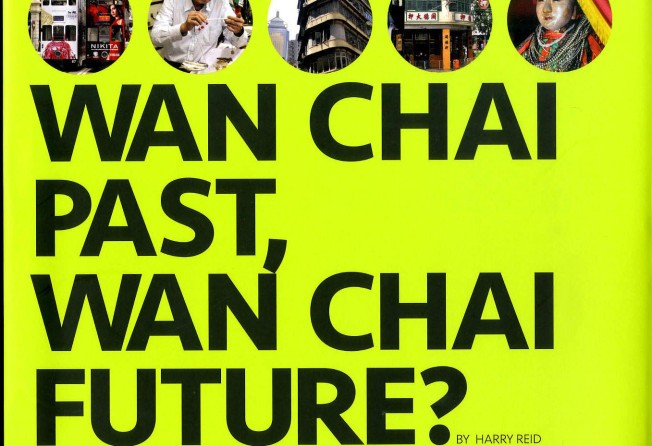Affable history of the district at Hong Kong's heart

Wan Chai Past, Wan Chai Future?
by Harry Reid
(self-published)
Felipe Fazenda
Ad man and author Harry Reid has lived, on and off, for more than 20 years in Hong Kong. He first stumbled upon Wan Chai as an impressionable youth: "I was 22 and a bachelor, and frankly I couldn't believe my luck."
That's the greatest strength of the book: Reid's sincerity and enthusiasm for the place. Armed with his camera, he walked the streets of Wan Chai for 12 weeks. He begins his book by declaring: "Ever since the days of the infamous China opium trade in the 1800s, Wan Chai has been at the centre of Hong Kong; historically, geographically and culturally."
He then sets about painting, in broad strokes, the ways in which Wan Chai is a microcosm of the rest of Hong Kong, starting from the time when the opium trade was an everyday matter for the early British taipans, to the present.
On the way he hits on familiar notes: the 1857 bread-poisoning episode; the foundation of HSBC; the Japanese occupation; and culminating in the 1997 handover ceremony, held in Wan Chai's own Convention Centre.
The history is light enough to maintain a personal and anecdotal tone, but not glib to the point that it feels potted. It's a pleasant journey for the initiated and those who may not know much about Hong Kong's history.
Along the way Reid demonstrates his intimate knowledge of Wan Chai, reeling off place names, streets and temples. However, it can at times feel like a disconnected list of proper nouns without a map included.
Occasionally, the narrative flow is abruptly interrupted by a long digression on photography or a diversion to another topic, such as "Hong Kong's Early History Recorded on Gravestones".
Other than those used to illustrate historical events or cityscapes since disappeared, all the photographs are furnished by the author himself.
The long midsection forms a different kind of "reading" experience, being a stream of photographs. Among them is an image of a man carrying a pig over his shoulders, followed by a Mercedes-Benz decked out with wedding decorations.
A similar disjunction occurs in the earnest, essay-like conclusion, alluded to in the book's subtitle Wan Chai's Disappearing World and What's Needed to Save It.
Here Reid mourns the destruction of the Kennedy Terrace townhouses and the fate of the old Lee Tung Street and its wedding card shops.
Reid clearly loves Wan Chai's "special atmosphere", and he wants you to love it too. The parts fit a little oddly, but this little book is an excellent and personal snapshot of a wonderful place.